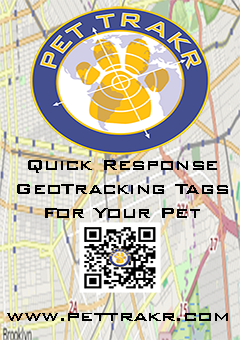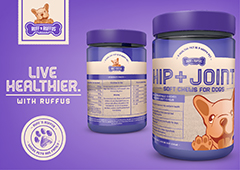LOVING OUR SENIOR PETS
By Dr. Jill Elliot
Sharing our lives with an animal, dog or cat, or for that matter any living animal that we might have as a pet: rabbit, ferret, bird, fish, turtle, reptile, etc. adds tremendous joy every day. We love them and they love us back. However, as time passes, we may start to notice slight changes in our beloved pet both physically and mentally.
PETS AND MIDDLE AGE
For most cats, middle age is probably around 10 years old. For dogs, generally the larger the breed the earlier middle age will be. A Great Dane may start showing changes at five or six years old. A medium breed dog, like a Keeshond might show changes at seven or eight years old. A small breed dog like a Yorkshire Terrier might show changes at age 10 or 11. When you start to notice any change in your pet as they age, take them to your veterinarian to find out what the cause might be.
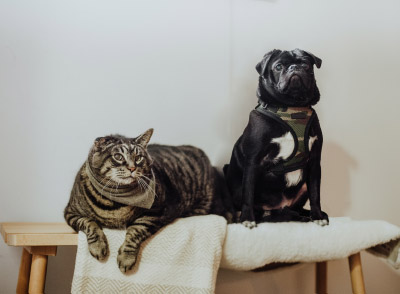
When you start to notice any change in your pet as they age, take them to your veterinarian to find out what the cause might be. Holistic practices can help.
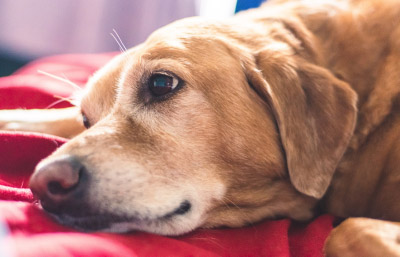
Dogs too may sleep more and be reluctant to go on long walks as they age. Stiffness sets in with arthritis symptoms and cognitive issues may occur too. There are holistic treatments that can help.
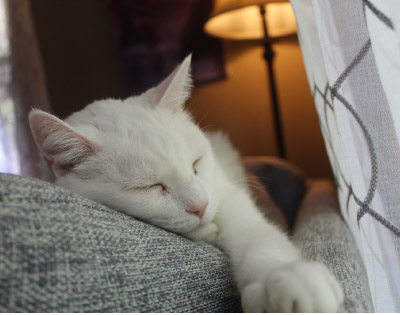
As cats age, they are prone to sleeping more during the day. And you may notice changes in their emotional state. Don’t let this go unattended.
With cats, physical changes to look out for are: sleeping more during the day; less jumping and climbing (due to possible arthritis); missing the litter box and fecal or urinary issues; constipation; gaining/ losing weight; poor appetite; difficulty eating, chewing. Increased appetite; pain on eating; difficulty bending down to eat; bad odor from the mouth; bumping into things (poor vision); dilated pupils (a sign of hypertension); cloudy eyes; decrease in hearing. All of these changes may point to illness like kidney disease, hyperthyroidism; diabetes, etc. As your cat ages there may be changes in its organs: kidneys, heart, liver, urinary tract. The faster you can address this and start on a treatment plan, the better.
With cats, physical changes to look out for are: sleeping more during the day; less jumping and climbing (due to possible arthritis); missing the litter box and fecal or urinary issues; constipation; gaining/ losing weight; poor appetite; difficulty eating, chewing. Increased appetite; pain on eating; difficulty bending down to eat; bad odor from the mouth; bumping into things (poor vision); dilated pupils (a sign of hypertension); cloudy eyes; decrease in hearing. All of these changes may point to illness like kidney disease, hyperthyroidism; diabetes, etc. As your cat ages there may be changes in its organs: kidneys, heart, liver, urinary tract. The faster you can address this and start on a treatment plan, the better.
With dogs many of the same signs and symptoms may be present: Sleeping more, not wanting to go for long walks, not jumping up on furniture, difficulty getting up from lying down, difficulty walking up and down stairs, falling; limping (due to any muscular/skeletal issue); weight gain as a result of not exercising or over-eating; difficulty chewing/eating due to dental issues; bad breath; bumping into things; staring into space; eye and ear discharge increased; cloudy eyes; constipation, lumps and bumps appear on body. Mentally the dog may ask for more attention or be more independent or even be more aggressive. It may seem confused and unable to follow commands as well as before.
If you notice any of these physical or mental symptoms take your pet to the veterinarian as soon as possible. Many people wait for weeks and sometimes months to take the pet to the vet, thinking the problem will resolve on its own. Please do not wait and hope.
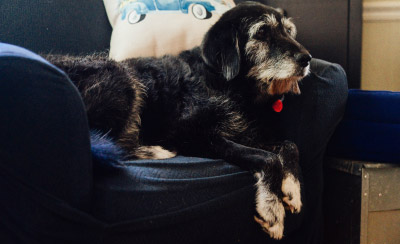
When you start to notice these changes in your pet, take it to the vet without delay. The problems of an aging pet do not resolve themselves on their own.
HOLISTIC SOLUTIONS
For muscular skeletal problems chiropractic and low level (cold) laser treatments can greatly improve the pet’s ability to function at almost normal levels. Acupuncture can also help these pets. In addition, these treatments can also help animals with constipation, diarrhea, vomiting, hyperesthesia, wound healing, mental agility, and more. Adding supplements like Glucosamine can help with joint problems while Omega-3 fatty acids help with skin and overall well-being. Probiotics aid digestion. Aminavast supports kidneys.
Feeding a high quality diet and keeping the pet hydrated, all these elements help to improve and sustain the pet’s quality of life. For cats, I recommend a canned diet only. Canned food has 80% moisture, whereas dry food has 15% moisture. The added moisture in the diet helps to hydrate the cat and may help with preventing kidney disease, urinary blockages, and constipation.
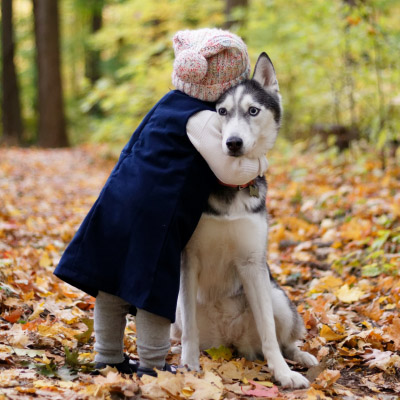
An older pet does not have to be a lazy pet. Keep your dog or cat stimulated. Don’t overlook dental care and assure they are getting a nutritionally complete diet.
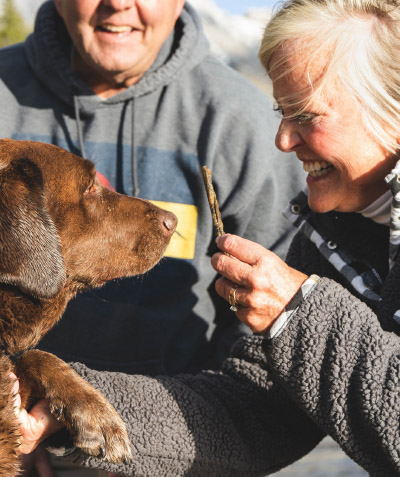
Supplements as well as acupuncture and cold laser treatments can improve a pet’s ability to function. Explore these holistic options to improve the life of an older pet.
RECOGNIZING THE SIGNS OF AGING
Good dental care is essential; a lack of dental care can lead to systemic disease later in life. Brush the pet’s teeth; give them healthy treats to clean their teeth; have a professional dental cleaning annually. Be sure they get appropriate exercise. Play games with them. Hide their toys or food-stuffed toys like Kong’s for an extra mental challenge. If you are home cooking, be sure you are feeding a nutritionally complete diet (www.balanceit.com). Provide good bedding for pets with joint/back issues. Get a litter box with a lower lip so the cat does not have to step up to use it. Have fresh water available all the time. Get ramps for climbing. Carpets for better traction. Fearful animals can benefit from medication or homeopathic remedies too.
If not attended to, it’s likely the pet’s condition will worsen with age. Certainly visit your vet who may have medication suggestions but also, consider seeking out a holistic veterinary practitioner for a second opinion. In many instances, natural, non-invasive treatments can improve and extend your pets life. With all the medical advances in veterinary medicine, many cats and dogs are living much longer. Let’s help them experience the best quality of life possible.
WHEN YOUR PET IS READY FOR HOLISTIC CARE
For more information on the holistic practices of Dr. Jill Elliot, DVM, at NYC’s West Village Veterinary Hospital go to www.nyholisticvet.com or email vetdrjill@dvmhospitals.com








